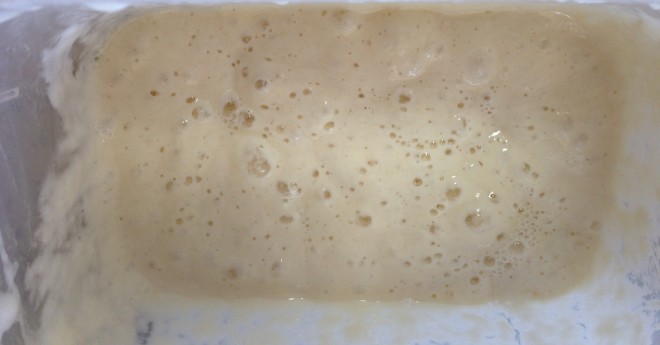
Retarded Fermentation
May 26, 2013Posted by Forno Bravo
I’ve been reading more about sourdough cultures and learned something interesting — and valuable. There are two main acids produced by a sourdough culture; lactic and acetic. Acetic acid is the acid that produces vinegar, and it gives your sourdough bread a more distinctive tang while lactic acid is associated with yogurt production and gives a smooth, milky flavor. As an aside, lactic acid is a big component in wine, where it is important to convert tart-tasting malic acid, naturally present in grape must, into softer-tasting lactic acid (malolactic fermentation). There are various ways of balancing how these two acids and flavors in your bread and your starter, including:
Hydration. Lactic acid thrives in a wet environment in your starter.
Whole grain. Acetic acid producing bacteria like whole grains.
Alcohol. Keeping the alcohol produced by fermentation (the think layer of liquid at the top) increases acidity.
Temperature. Acetic acid flourishes at 50F.
For me, this is one of those ah-hah moments. We have all heard (over and over) how retarding fermentation and long, slow fermentation gives us a dough that has more flavor and more character — and I have always intuitively understood that giving yeast more time for work on the flour is a good thing; and it even made sense that a longer fermentation gives enzymes and bacteria time to work on the carbohydrates in the flour (which is a good thing). But the idea that there is a bacteria in sourdough that works a lot better at a cooler temperature (and if you want to get that flavor you need to hold the temperature of your fermenting dough to a very chilly 50F) is such a clear statement. I think I get it. haha.





